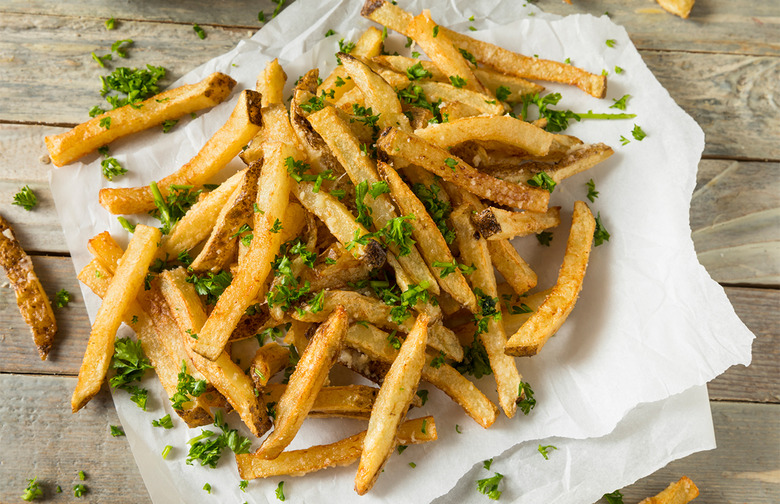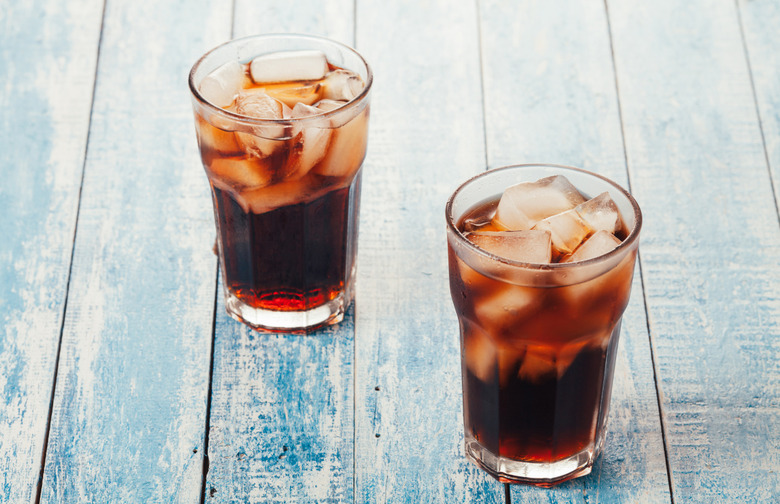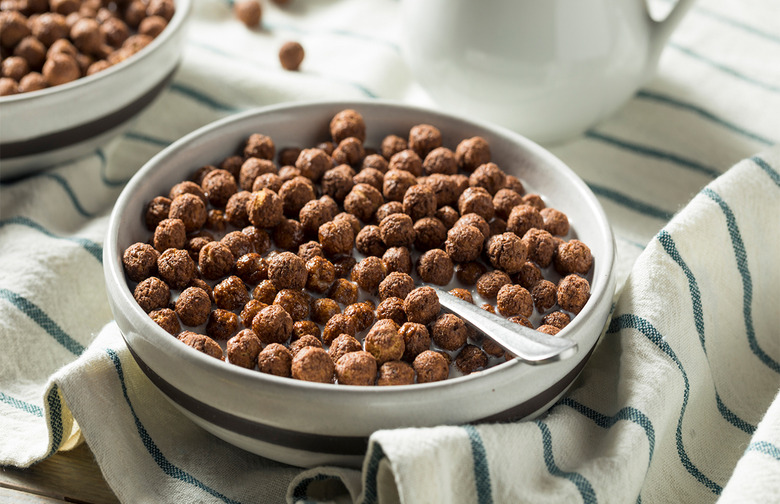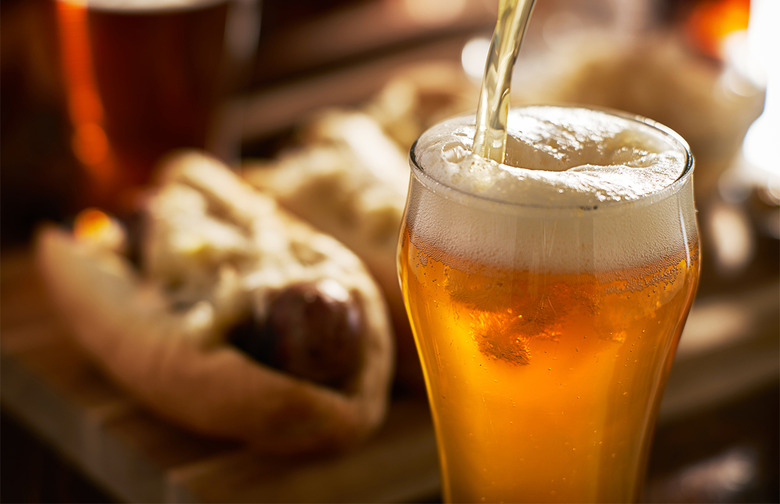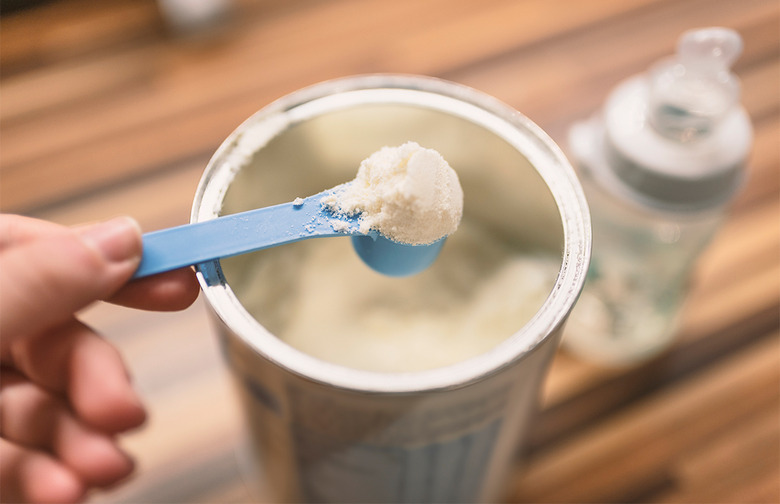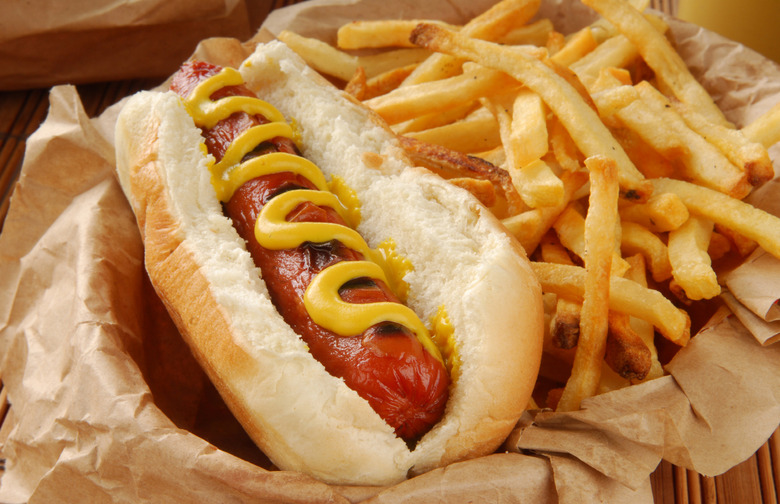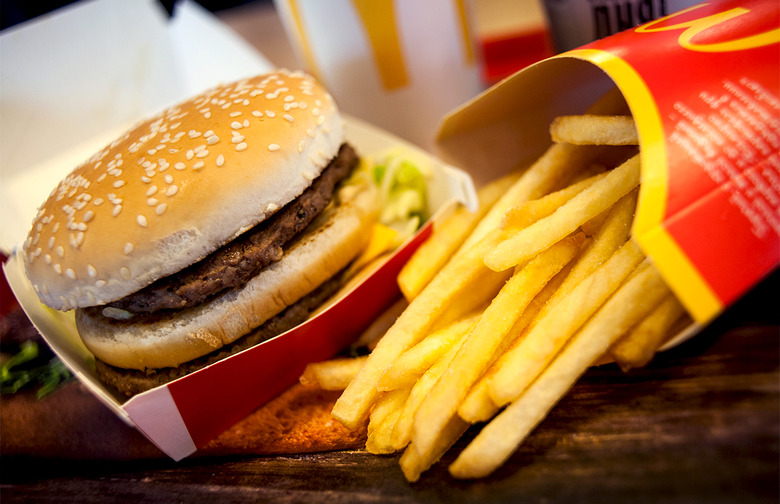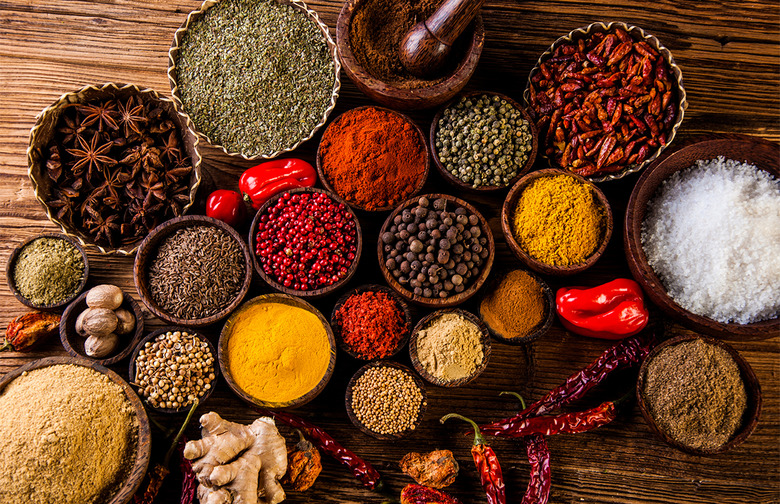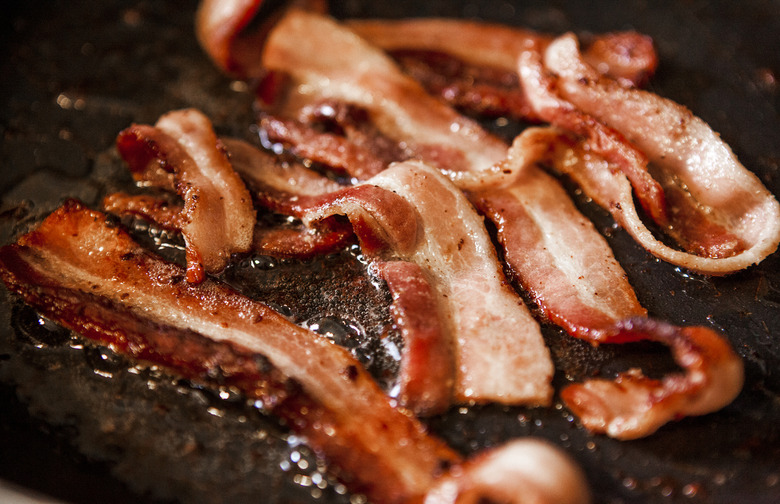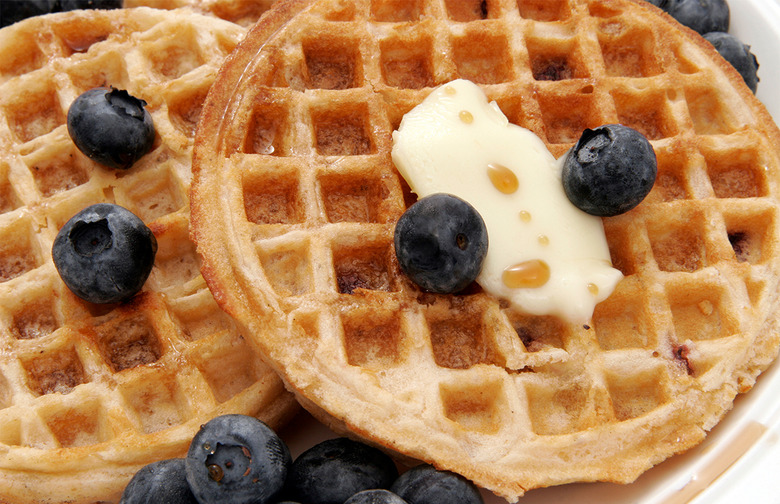19 Chemicals You Didn't Know Were In Your Food Gallery
If you ever look at the nutrition labels on processed foods — and you might be reading these labels all wrong — you probably know there are tons of chemicals in most packages. You also probably glance over the alphabet soup of additives without a second thought. But what happens when you take a closer look at what's really in most of these products? Are these foods really safe?
What's even more of a mystery are foods and drinks that you can't read a label for — such as fast food menu items that seem really healthy. You knew the McDonald's fries were bad. But did you know Dunkin Donuts' "eggs" used to contain over 20 ingredients?
Unless you live on a farm and grow all of your own food, it's nearly impossible to avoid consuming chemicals on a daily basis from your diet. However, not all of these chemicals are as malignant as they seem. We consulted the databases of various government organizations and research institutions to reveal the truth about 19 common chemicals found in your food and drink.
Acrylamide
According to the Food and Drug Administration, acrylamide is a chemical that sometimes forms as a result of high-temperature cooking processes, such as frying or roasting. In some animal studies, the chemical resulted in a greater risk of cancer, though additional long-term studies are needed. Acrylamide comes from cooking of natural sugars in foods and is not artificial — foods that most often form acrylamide during cooking include potatoes, grains, and coffee. To avoid the chemical, stick to foods that are boiled or steamed.
Ammonium Sulfate
This chemical is an inorganic salt most often used in the baking industry. Ammonium sulfate is commonly used as a dough conditioner, surfactant, or dough strengthener; bread companies use the substance to improve the volume and shelf life of their bread. According to one case study in the National Library of Medicine Database, excessive consumption of the chemical may cause major short-term gastrointestinal distress.
Azodicarbonamide (ADA)
ADA is an FDA-approved chemical used as a whitening agent in cereal flour and a dough conditioner in bread baking. After extensive, multi-year studies looking for negative side effects of the chemical, the FDA deemed it safe for the food industry's use. "Based on the science, FDA is not recommending that consumers change their diets because of exposure to ADA," the organization says. ADA must be listed on the ingredient label of any bread or cereal that includes it in production.
Benzene
Benzene is a carcinogenic chemical used in industrial production of some plastics and released into the air from automobiles and burning coal and oil. Sometimes referred to as the "yoga mat compound," benzene made its way into some soft drinks and other mass-produced beverages that contain both benzoate salts and ascorbic acid or erythorbic acid. High heat exposure causes formation of the chemical, revealed in 2005 when studies on soft drinks discovered the carcinogen in many products. The FDA claims to be working closely with the beverage industry to eradicate the chemical for good.
Butylated Hydroxyanisole (BHA)
Butylated hydroxyanisole, or BHA, is a food preservative you can find both in your favorite breakfast food and in petroleum products. The National Institutes of Health claims that BHA "is reasonably anticipated to be a human carcinogen;" however, the FDA approved the chemical for use in many food products, including active dry yeast, various types of potato shreds, beverages and desserts prepared from dry mixes, shortening, and dry breakfast cereals. The FDA claims that BHA is "generally recognized as safe for use in food," so long as the food meets certain requirements.
Calcium Sulfate
Calcium sulfate is an FDA-approved additive used as a stabilizer and to add firmness to processed foods. You can find the chemical in all kinds of foods, ranging from dairy products such as cheese or condensed milk to grain-based products like bread or pasta. Even some protein sources, such as tofu, sometimes are produced with calcium sulfate. Luckily, the substance is generally regarded as safe for use in small amounts.
Ethyl Carbamate (Urethane)
Ethyl carbamate, or urethane, is a naturally-occurring chemical component of fermented substances. You'll find it in beer, wine, and foods made with fermentation processes. This includes bread and even some soy sauce. According to the World Health Organization, urethane is genotoxic and classified as a Group 2A carcinogen. However, the same organization considers any ethyl carbamate found in foods to be of "low concern" — though consuming the chemical in alcoholic beverages was considered more risky.
Furan
Furan has been suspected to cause cancer from results of some animal studies, though human exposure studies with low doses of the compound have not been thoroughly conducted. According to the FDA, "Furan is a chemical contaminant that forms in some foods during traditional heat treatment techniques, such as cooking, jarring, and canning." As a result, you'll find furan in many canned and jarred foods, particularly in soups, pasta meals, and jarred baby foods.
Melamine
In addition to furan, babies who are fed store-bought foods may also be at risk of melamine exposure. Melamine is a chemical commonly used in plastics, adhesives, countertops, dishware, and whiteboards. But baby formula was revealed to contain melamine in 2008 under FDA testing. It has also been found in pet food and rice-based products. All of the contaminated products likely came from China, according to the World Health Organization. Though there is not sufficient evidence on the chemical's effect for humans, animal studies suggest that melamine can cause kidney stones and can have potentially carcinogenic effects.
Polychlorinated Biphenyl (PCBs)
PCBs are colorless, oily liquids or solids that used to be widely manufactured but are now considered toxic by the Environmental Protection Agency. These chemicals have been suspected to cause many health effects, including acne, skin rashes, gastrointestinal discomfort, changes in the blood and liver, depression, and fatigue. PCBs are no longer made in the United States due to their many negative health effects. However, according to the Agency for Toxic Substances and Disease Registry, "People are exposed to PCBs primarily from contaminated food and breathing contaminated air." PCBs remain a dangerous contaminant of lakes, rivers, soil, and manufacture sites. The food main sources that elicit concern are fish, meat, and dairy products — especially processed meat products such as hot dogs.
Perfluorooctanoic Acid (PFOA)
The American Cancer Society describes PFOA as a man-made chemical used to make Teflon with "the potential to be a health concern because it can stay in the environment and in the human body for long periods of time." PFOA is considered "possibly carcinogenic to humans," and the EPA has set a goal to reduce the amount of PFOA in food and drink by 95 percent since it was initially brought to public attention in 2006. PFOA is still found in the wrappers of some foods, including fast food, microwavable popcorn, and candy wrappers.
Perchlorate
Perchlorate can occur either naturally or as a man-made chemical. The molecule can be found in rocket propellant, explosives, fireworks, and road flares, as well as in drinking water and some foods. Perchlorate continues to contaminate the environment, meaning that water reservoirs and certain food products are at risk of coming into contact with the chemical. The FDA confirms that exposure to perchlorate can disrupt thyroid function and the development of the nervous system, though the average amount of exposure in America is too low to pose this risk. However, they still recommend preparing baby formula with bottled water or another source that is lower in perchlorate levels than water from your tap.
Propyl Gallate
Propyl gallate is a food additive that is also used in some cosmetics and pharmaceuticals. The chemical has antioxidant properties, meaning that it prevents oxygen from blending with the oil in food, extending the food's shelf life. Foods that may contain propyl gallate include meat products, microwaveable popcorn, soup mixes, chewing gum, mayonnaise, and frozen meals. No adverse health effects are mentioned by the FDA, though some studies suggest the chemical may be toxic to cells.
Silicon Dioxide
Silicon dioxide, or silica, is a naturally-occurring chemical used in many powdered food products. In nature, you'll find silicon dioxide in the sand at the ocean's beaches; in your food, you'll find it packed into spices, dry coffee creamer, and other powdered foods. Heavy exposure to the chemical has been linked to autoimmune disease, lung problems, and a disproportionate number of deaths of Chinese workers in one 2001 study. However, in low doses there are no known health consequences; the FDA has approved the use of silica under certain conditions.
Sodium Nitrite
Part of the reason that processed lunch meats are under scrutiny by nutritionists and health researchers is the presence of sodium nitrite. This additive is a salt and antioxidant used to cure meats such as deli ham, hot dogs, and bacon. The chemical helps to preserve food and prevent bacteria growth that may cause food poisoning; however, some research has linked nitrates to cancer. The FDA limits the presence of these compounds for meat products, but experts suggest that you don't need to worry about avoiding the compounds in your diet for health reasons.
Sodium Stearoyl Lactylate (SSL)
Sodium stearoyl lactylate is an FDA-approved food additive used to alter the volume and mixing properties of certain foods. The compound is considered safe and highly effective, although some people experience allergies or intolerance to the substance. SSL would be difficult to avoid, however — it has widespread application in baked goods, pancakes, waffles, cereals, pastas, instant rice, icings, fillings, puddings, toppings, sugar confectionaries, powdered beverage mixes, creamers, dips, sauces, gravies, chewing gum, canned meats, and pet food, among other products.
Tert-Butylhydroquinone (TBHQ)
TBHQ is commonly used as a preservative for vegetable oil and animal fat products. You'll also find the chemical in potato chips, crackers, and some fast food. Invisible and odorless when used in small quantities to preserve a product, the chemical is approved by the FDA. However, according to the National Library of Medicine Database, "There have been reports of vision disturbances in individuals exposed to this chemical." The NLM Database website notes that the chemical is not suspected to be a carcinogen.
Tartrazine
This might not come as much of a surprise, but the bright colors of Kraft cheese, gummy candies, and other products aren't always achieved by way of nature alone. Many of these products contain chemical food dyes such as tartrazine, more commonly known as Yellow No. 5. Many companies are making the switch to more natural food colorings — so you may soon be eating ground up seeds, insects, and beets instead of these chemicals in your favorite brightly-colored foods. It makes for a gross game of "Would You Rather?" but we think we prefer insects to tartrazine, a chemical that's been linked to poor liver and kidney function, hyperactivity in children, and cancer risk.
Triacetin (Glycerol Triacetate)
Triacetin is commonly used as a food additive as a plasticizer and a solvent. You can find the compound in chewing gum, baked goods, dairy products, and various other foods. Triacetin has been fully assessed as a safe additive to consume in the portions allowed by the FDA, so there's no need to worry about the chemical when eating the best-tasting store-bought chocolate chip cookies!
More from The Daily Meal:
The Most Disastrous Fast Food Menu Fails of All Time
Meet the Clean 15: The Fruits and Vegetables Least Likely to Poison You
21 All-Natural Cleaning Tips for Your Home
Secrets Your Favorite Fast Food Chains Don't Want You to Know

